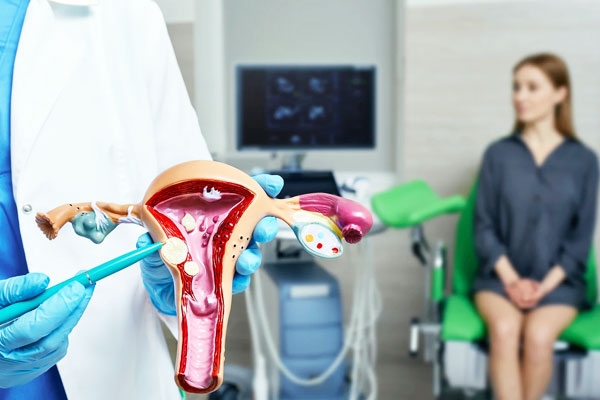
(Image source from: Canva.com)
In India, discussions about cancer are increasing, and this is not a coincidence. As people's habits evolve and life expectancy rises, cancer is becoming a significant health issue. However, cancers related to women's reproductive systems often don’t receive as much focus. The most common types include endometrial, cervical, and ovarian cancers. Despite being among the primary cancers affecting women, knowledge about them is still lacking. Gynaecological cancers make up 15 to 30 percent of all cancers in women. Each year, approximately five hundred thousand new cases of these cancers are identified worldwide, with over one hundred thousand occurring in India. Identifying these cancers early, while they are still contained, can save lives by enabling timely treatment. Unfortunately, because of low awareness and varying patterns of the disease, many women are diagnosed at later stages, which worsens their chances of recovery and treatment results. For instance, if endometrial cancer is found late, the likelihood of getting better decreases greatly. Ovarian cancer, which frequently goes unnoticed until it’s advanced, is the top reason for death among gynaecological cancers. Conversely, when cervical cancer is caught early and treated properly, it is one of the easiest types to cure.
Raising awareness and taking preventive steps, along with finding cancers early, can help save lives. In India, the growth of endometrial cancer is closely tied to changing habits and reproductive trends in women. The primary reason for endometrial cancer is being exposed to estrogen for a long time. When estrogen is not balanced by other hormones, it may overly stimulate the uterus lining, resulting in changes to cells that could turn into cancer. Hormonal imbalances and lifestyle choices are crucial here. For example, extra fat in obese individuals can change other hormones in the body into estrogen. In fact, nearly 80 percent of endometrial cancers are linked to excess estrogen or low levels of progesterone due to obesity. Keeping a healthy weight through balanced eating and exercise, along with routine medical check-ups, can help lower the risk.
It is essential to recognize and comprehend the typical issues linked to ovarian and endometrial cancers. Ovarian cancer frequently does not present any signs during the initial phase. When signs such as bloating in the abdomen, reduced appetite, losing weight, discomfort in the pelvic area, tiredness, pain in the back, changes in bowel habits, or frequent need to urinate occur, they are commonly confused with other typical health problems. For endometrial cancer, early signs may consist of unusual bleeding in younger women and bleeding after menopause in older women. As the cancer advances, signs may include pain in the pelvic area, swelling in the abdomen, or weight loss without a known reason. These symptoms can mistakenly be attributed to less serious issues.
This is why it is vital for women to be attentive to their bodies and recognize what feels normal for them. Any unusual vaginal bleeding should always be examined by a healthcare professional. If other signs continue for two weeks or longer, it is wise to get medical advice. Although multiple health issues could cause these symptoms, visiting a doctor helps ensure that any serious conditions are not missed.
Receiving an early diagnosis and taking the appropriate tests can lead to a meaningful improvement. Specifically, biomarker testing can provide new treatment possibilities that may enhance long-term results. The treatment of gynecological cancers is becoming more focused through therapies that target specific biomarkers, which have proven to yield better outcomes. In the context of gynecological cancers, being informed is the first step. By acting promptly, more women can receive early diagnoses and find effective treatment solutions. Consult your doctor and be aware of your risks.







